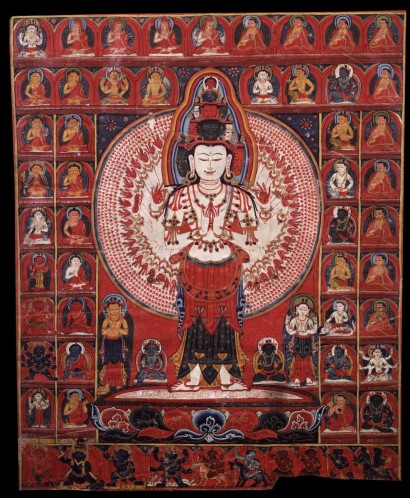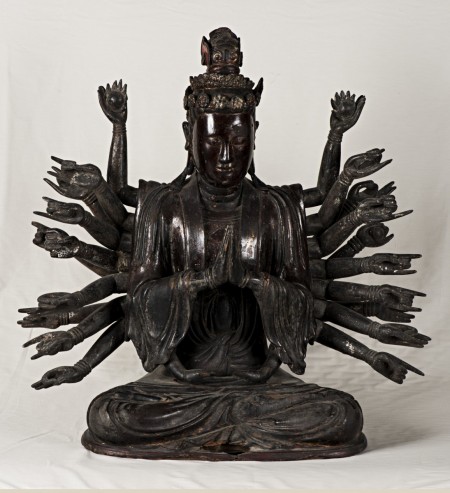Tibet, 14th–15th century; ground mineral pigment on cotton; 29 1⁄4 x 25 1⁄4 x 1 1⁄4 in.; The Rubin Museum of Art, New York, C2006.66.190.
Thousand-armed Avalokiteshvara (Quan Am)
Vietnam, 17th century or later; lacquered wood; 30 x 31 in.; The Frances Lehman Loeb Art Center, Gift of Danielle Selby ’13, 2014.31.5.
In the first millennium when Buddhism first arrived in Southeast Asia, Mahayana imagery was common; eventually an older branch of the religion prevailed in the region. As a result, the representation of bodhisattvas diminished, except in Vietnam, where the Mahayana survives. Chinese traditions no doubt influenced this intriguing lacquered wood depiction of Thousand-Armed Avalokiteshvara, known as Quan Am in Vietnam. Unfortunately, most of the work’s attributes are lost, but the sculpture does retain two orbs in the uppermost hands, representing wish-fulfilling jewels.





